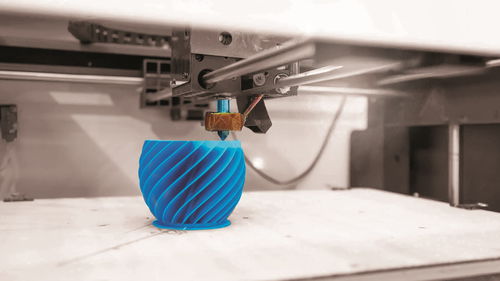
- Production Machines
- Plastics Processing
- ABS 3D printing
- Induplast Plastícos de Ingeniería S.L.
- Company
- Products
- Catalogs
- News & Trends
- Exhibitions
ABS 3D printing PAPLATPU

Add to favorites
Compare this product
Characteristics
- Materials to be printed
- ABS, PA, PLA, TPU, PC
- Technology
- FDM
- Applications
- prototyping, industrial
Description
FDM technology can be used to create detailed functional prototypes as well as technical parts with highly complex geometries.
As a result, parts manufactured with this additive printing process can be used in the most specialised fields of industry, from aeronautical industry components to the packaging industry or production tools and assembly lines in factories in the automotive industry – small quantities of parts.
The materials used with this technology are standard and durable, with good mechanical properties that give the end parts quality, stability and high accuracy.
A wide variety of thermoplastic polymers are used for fused deposition 3D printing: PLA, ABS, Nylon, HIPS, TPU, PC, CPE, PA.
How does FDM work?
FDM is a filament-based technology in which a temperature-controlled printing head accurately extrudes a thermoplastic material, layer by layer, into a 3D model on a build platform (known as a build plate/printer bed).
To improve the quality of some 3D prints, support structures are created when needed and are often constructed from a water-soluble material.
FDM applications:
Products for engineering, industrial machinery and tool manufacturing in all sectors, high accuracy and functional end parts.
Catalogs
No catalogs are available for this product.
See all of Induplast Plastícos de Ingeniería S.L.‘s catalogsOther Induplast Plastícos de Ingeniería S.L. products
3D Printing
Related Searches
- Machining service
- Milling machining
- CNC milling machining
- ISO machining
- Precision milling machining
- ISO 9001 milling machining
- Automotive milling machining
- Small series milling machining
- 5-axis milling machining
- Medium series milling machining
- Prototyping milling machining
- 3D printing
- Industrial milling machining
- Plastic 3D printing
- Plastic milling machining
- Aeronautic milling machining
- Machining for the aerospace industry
- Industrial 3D printing
- Large series milling machining
- Prototyping 3D printing
*Prices are pre-tax. They exclude delivery charges and customs duties and do not include additional charges for installation or activation options. Prices are indicative only and may vary by country, with changes to the cost of raw materials and exchange rates.



